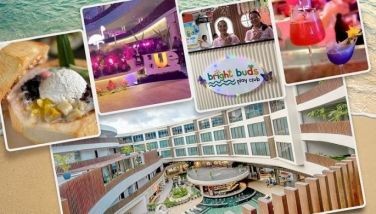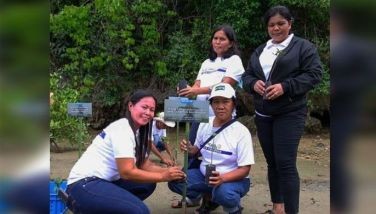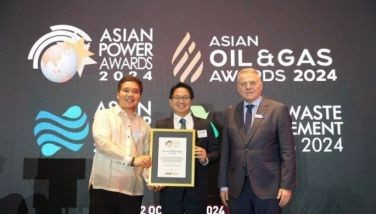For DOST, some breakthroughs and innovations in 2015
MANILA, Philippines - The Department of Science and Technology (DOST)’s promotion of an S&T “ecosystem” in the country started bearing fruit in 2015 and is likely to further benefit the economy with the ASEAN Economic Community now in effect.
Science Secretary Mario Montejo said such an ecosystem would make possible substantial investments in infrastructure as facilities and laboratories are set up to provide Filipino scientists and researchers a conducive environment for research and development.
“There is usually a question on what is the role of science and technology, why do you spend on S&T. This is not just here in the country but also elsewhere,” Montejo told The STAR. “For S&T to really have a role, it should help people, it should benefit people.”
These benefits, Montejo pointed out, come with breakthroughs achieved by scientists and researchers in their labs, workshops, and in the farms or fields.
“We had some breakthroughs in 2015,” Montejo said.
He cited the irradiated carageenan fertilizer unveiled in field trials funded by the DOST’s Philippine Council for Agriculture and Aquatic Resources Research and Development (PCAARRD). The collaboration between nuclear scientists and agriculturists was seen to boost resiliency of rice plants and increase yield by up to 65 percent.
“That’s just initially for rice… irradiation done with nuclear science. Our scientists from the PNRI (Philippine Nuclear Research Institute) worked with agriculturists and agri-scientists,” Montejo said.
The R&D for the “carra-vita” organic fertilizer was done by the PNRI while agriculturists and scientists from PCAARRD and UP Los Baños did the research, application and field trials in rice fields in Pulilan, Bulacan; Victoria and Los Baños in Laguna, Cabanatuan, Nueva Ecija and Iloilo.
Agriculture Secretary Proceso Alcala was excited about the partnership where his department will fund a program to distribute the “carra-vita” formula for free to rice farmers this 2016, Montejo said.
The P50-million program will benefit some 30,000 hectares of rice lands.
Another flagship DOST R&D project, the Electric Road Train (ERT) was completed in 2015 to improve efficiency of public mass transport systems.
The assembly of the ERT prototype was finished in the second quarter of 2015, allowing the DOST to present the train during the National Science and Technology Week last October.
Montejo said the ERT may be adopted by the Department of Transportation and Communications whose secretary, Joseph Emilio Abaya came away impressed after a test ride.
Montejo pointed out that the Clark Development Corp. has asked the DOST to collaborate on a study to construct an ERT line at the Clark special economic zone.
Leading local construction firm D.M. Wenceslao, owner of Aseana City, has expressed interest in having an ERT line in the envisioned central business district.
The year 2015 saw the completion of infrastructure investments of the DOST to lay out buildings and laboratories to serve as facilities for design and innovation.
Montejo, however, stressed that the facilities are not just buildings.
Testing centers, FICs, digital library
Raymund Liboro, DOST assistant secretary for plans and programs, pointed out that the DOST launched in 2015 several test facilities and innovation centers.
In January 2015, Die and Mold Solutions Center (DMSC) began offering modern infrastructure support services and capabilities that will connect firms involved in processing of raw materials with firms that convert these into the final product.
Last June, the Auto-Parts Testing Facility started to serve the local automotive parts manufacturing industry. The facility will serve as a testing center for local manufacturers so that expenses incurred overseas will be minimized.
Housed within the facility are more than 30 pieces of equipment performing different testing services for automotive and other metal-related industries, such as hardness measurement of metallic material and rubber, thickness measurement for base metal, simulated crash analysis, tire endurance and accelerated corrosion tests.
Last July saw the launch of the Electronics Product Development Center, a workshop for Filipino innovators with ideas for potential breakthrough gadgets.
Liboro said the DOST had also opened three regional Food Innovation Centers in 2015, bringing to six the total FICs.
Last September, Region 8 or Eastern Visayas FIC set up shop at the Eastern Visayas State University in Tacloban City, and Region 1 FIC at the Mariano Marcos State University S&T Park in Ilocos Norte.
Early in 2015, Region 2 FIC commenced operations at the Cagayan State University Carig campus in Tuguegarao City, Cagayan Valley.
Montejo said the FICs have reportedly come up with 2,200 product innovations.
The DOST also bagged another international award in 2015. The digital library kiosk Starbooks won recognition as an innovative library project from the prestigious American Library Association.
The digital library is accessible with or without Internet connection. The citation was presented to Liboro and the DOST last June at the International Librarians Reception at the San Francisco Public Library in California.
- Latest






























